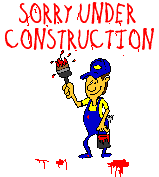Motor Vehicle Litigation
If liability is contested and the liability is disputed, it is necessary to start a lawsuit. The defendant then has the opportunity to respond to the complaint.
New York follows pure comparative fault rules which means that when a jury finds you to be at fault for causing a crash the damages awarded will be reduced by the percentage of negligence. This rule is not applicable to owners of vehicles which are rented out or leased to minors.
Duty of Care
In a negligence suit the plaintiff has to prove that the defendant was obligated to exercise reasonable care. This duty is owed by all, but those who operate a vehicle owe an even higher duty to other drivers in their field. This includes ensuring that they do not cause accidents in motor vehicles.
In courtrooms the standard of care is determined by comparing an individual’s behavior to what a normal person would do under similar circumstances. In the case of medical malpractice, expert witnesses are usually required. Experts with a superior understanding of specific fields could be held to a higher standard of treatment.
A breach of a person’s duty of care can cause harm to a victim or their property. The victim then has to show that the defendant violated their duty and caused the injury or damages they sustained. Proving causation is a critical part of any negligence case and involves taking into consideration both the real reason for the injury or damages as well as the reason for the damage or injury.
For instance, if a person runs a red stop sign and is stopped, they’ll be hit by a car. If their vehicle is damaged, they will be responsible for the repairs. The real cause of the crash could be a fracture in the brick that leads to an infection.
Breach of Duty
The second aspect of negligence is the breach of duty by an individual defendant. The breach of duty must be proved in order to receive compensation for a personal injury claim. A breach of duty happens when the actions of a party who is at fault fall short of what an average person would do in similar circumstances.
For instance, a physician has several professional duties to his patients stemming from laws of the state and licensing boards. Drivers are required to care for other drivers and pedestrians, as well as to obey traffic laws. Drivers who violate this duty and causes an accident is accountable for the injuries suffered by the victim.
A lawyer can use “reasonable people” standard to demonstrate that there is a duty of care and then show that the defendant failed to meet this standard in his conduct. The jury will decide if the defendant complied with or did not meet the standards.
The plaintiff must also prove that the breach by the defendant was the main cause of the plaintiff’s injuries. This can be more difficult to prove than the existence of a duty and breach. A defendant could have run through a red light but that’s not the cause of the crash on your bicycle. Because of this, the causation issue is often contested by the defendants in cases of crash.
Causation
In noble motor vehicle accident lawsuit vehicle cases the plaintiff must prove an causal link between defendant’s breach and their injuries. If the plaintiff suffered a neck injury in a rear-end collision the attorney for the plaintiff would argue that the accident was the cause of the injury. Other factors that are needed to produce the collision, like being in a stationary vehicle, are not culpable and do not affect the jury’s decision of liability.
It can be difficult to prove a causal link between a negligent act, and the psychological issues of the plaintiff. It could be because the plaintiff has a rocky past, a poor relationship with their parents, or has been a user of drugs or alcohol.
It is crucial to consult an experienced lawyer if you have been involved in a serious st francis motor vehicle accident lawsuit accident. The lawyers at Arnold & Clifford, LLP have years of experience representing clients in personal injury cases, business and commercial litigation, as well as motor vehicle accident cases. Our lawyers have developed working relationships with independent doctors in different specialties, as well as expert witnesses in computer simulations and reconstruction of accident.
Damages
In motor vehicle litigation, a plaintiff can seek both economic and noneconomic damages. The first category of damages covers any monetary costs that can be easily added to calculate a total, for example, medical expenses loss of wages, property repair and even future financial losses, like diminished earning capacity.
New York law recognizes that non-economic damages like suffering and pain, as well as loss of enjoyment are not able to be reduced to cash. However, these damages must be proven to exist using extensive evidence, such as deposition testimony from plaintiff’s close friends and family members medical records, other expert witness testimony.
In the event of multiple defendants, courts will typically use the comparative fault rule to determine the amount of total damages that should be divided between them. The jury will determine the percentage of fault each defendant is accountable for the incident and then divide the total damages awarded by the same percentage. However, New York law 1602 specifically excludes owners of vehicles from the comparative fault rule in relation to injuries sustained by the driver of those cars and trucks. The resulting analysis of whether the presumption of permissive usage applies is complex, and typically only a convincing evidence that the owner has explicitly was not granted permission to operate the vehicle will overcome it.
